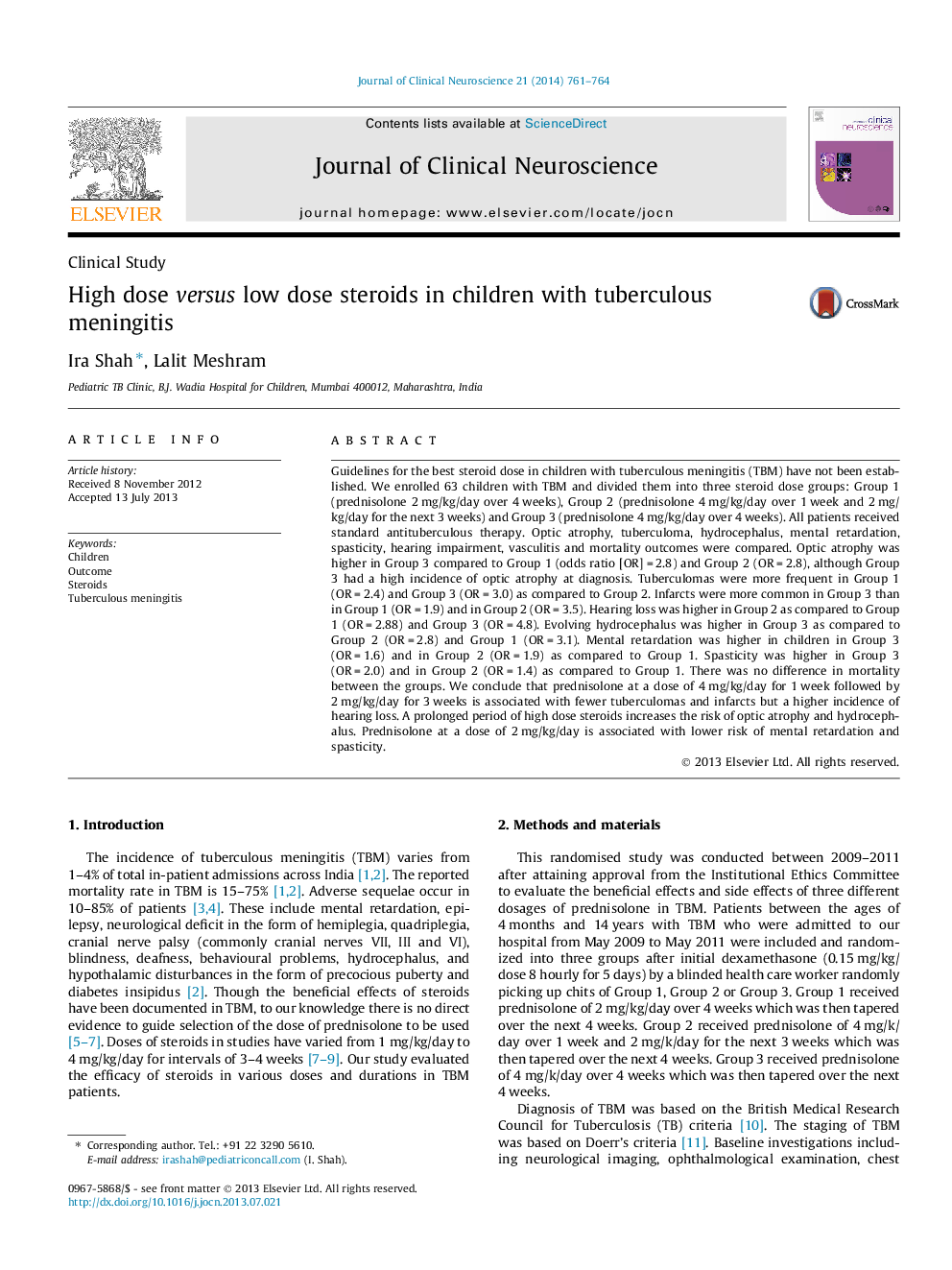| Article ID | Journal | Published Year | Pages | File Type |
|---|---|---|---|---|
| 6019649 | Journal of Clinical Neuroscience | 2014 | 4 Pages |
Abstract
Guidelines for the best steroid dose in children with tuberculous meningitis (TBM) have not been established. We enrolled 63 children with TBM and divided them into three steroid dose groups: Group 1 (prednisolone 2Â mg/kg/day over 4Â weeks), Group 2 (prednisolone 4Â mg/kg/day over 1Â week and 2Â mg/kg/day for the next 3Â weeks) and Group 3 (prednisolone 4Â mg/kg/day over 4Â weeks). All patients received standard antituberculous therapy. Optic atrophy, tuberculoma, hydrocephalus, mental retardation, spasticity, hearing impairment, vasculitis and mortality outcomes were compared. Optic atrophy was higher in Group 3 compared to Group 1 (odds ratio [OR]Â =Â 2.8) and Group 2 (ORÂ =Â 2.8), although Group 3 had a high incidence of optic atrophy at diagnosis. Tuberculomas were more frequent in Group 1 (ORÂ =Â 2.4) and Group 3 (ORÂ =Â 3.0) as compared to Group 2. Infarcts were more common in Group 3 than in Group 1 (ORÂ =Â 1.9) and in Group 2 (ORÂ =Â 3.5). Hearing loss was higher in Group 2 as compared to Group 1 (ORÂ =Â 2.88) and Group 3 (ORÂ =Â 4.8). Evolving hydrocephalus was higher in Group 3 as compared to Group 2 (ORÂ =Â 2.8) and Group 1 (ORÂ =Â 3.1). Mental retardation was higher in children in Group 3 (ORÂ =Â 1.6) and in Group 2 (ORÂ =Â 1.9) as compared to Group 1. Spasticity was higher in Group 3 (ORÂ =Â 2.0) and in Group 2 (ORÂ =Â 1.4) as compared to Group 1. There was no difference in mortality between the groups. We conclude that prednisolone at a dose of 4Â mg/kg/day for 1Â week followed by 2Â mg/kg/day for 3Â weeks is associated with fewer tuberculomas and infarcts but a higher incidence of hearing loss. A prolonged period of high dose steroids increases the risk of optic atrophy and hydrocephalus. Prednisolone at a dose of 2Â mg/kg/day is associated with lower risk of mental retardation and spasticity.
Related Topics
Life Sciences
Neuroscience
Neurology
Authors
Ira Shah, Lalit Meshram,
